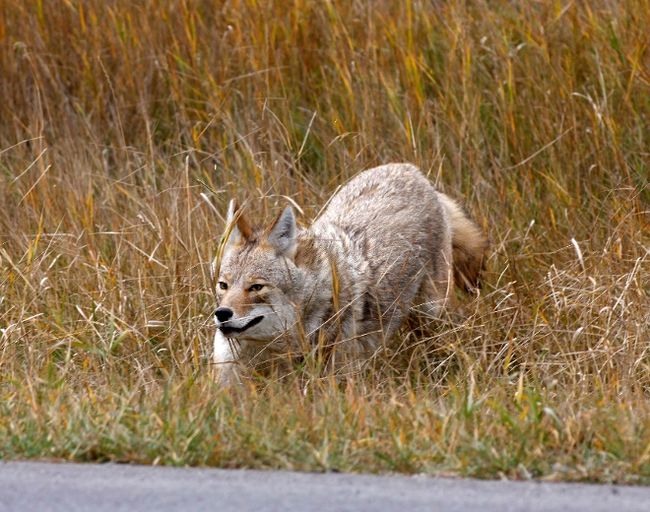
Coyote.
Police say a teenage girl was attacked from behind Friday morning in a London park by a
coyote who knocked her to the ground and bit or tore at her face and arm.While the girl survived the assault after an older male friend pulled the animal off her, news of the attack stunned a wildlife expert,
who said he's seen nothing like it in seven or eight years reporting on coyotes in the London region.
"This is a rare occurrence," said Brandon Williamson of the Upper Thames River Conservation Authority.
Police say the teenage girl, who is less than 16 years old, had been walking with an older teenage male at 8:30 a.m. along the north bank of the south branch of the Thames River between Adelaide and Egerton streets.
Known as South Branch Park, it has a concrete path that's popular with bicyclists, joggers and people going for strolls — Yasushi Iwasaki was biking with his kids, ages 6 and 11, less than 12 hours after the attack.
"It's scary," he said when told what had happened.
The same park is expected to draw hundreds of people Saturday to plant trees near the bank, an event organized by ReForest London.
The teenager was treated at hospital and released. Police didn't disclose details of her condition.
Police are warning people not to go through the park alone.
"This area is populated by coyotes," police wrote in a news release.
But one coyote expert questions whether police have done enough to confirm the assailant was a coyote, when a dog seems more likely.
People who claim to have seen a coyote often are proven wrong, said Lesley Sampson, founder and executive director of Coyote Watch Canada. That's even more the case when the witnesses are subjected to a trauma.
"When people are upset, they are even more likely to misidentify the animal," she said.
While Williamson says a coyote may stalk its prey from behind or the side, Sampson says it would be exceptionally rare for a coyote to leap up in a way that could knock someone down.
"Jumping up is not coyote behaviour, it's dog behaviour," she said.
Before anyone concludes the assailant was a coyote, police should share the evidence that led them to that conclusion. If all they have is the eyewitness account of the victim and her friend, that's not enough, Sampson said.
The attacking animal may have left clues — such as feces — that would show if it was a wild or domesticated animal, Sampson said.
Both Sampson and Williamson say key questions were left unanswered by police, who were not available to answer Free Press questions. Among them:
— Did the teenager or her friend have a dog that might have drawn a coyote or another dog to them?
— Did the teen or her friend have food that may attracted an animal?
There are coyotes in the city, said Williamson, but they're typically spotted close to dawn or dusk. They may even follow a person, since urban coyotes are less frightened of people than are rural coyotes.
A few have attacked dogs in the London region, he said. But he can't recall any attacking a person.

Comment: See also these reports for the last 3 years of rare (or nowadays not so rare ) coyote attacks on people: Aggressive coyote attacks man in Saddle River, New Jersey
Coyote attacks two residents in Groveland, MA
Brampton woman attacked by coyote, Canada
Coyote attacks second young girl in Rye, New York
Man attacked by coyotes in Washington State
Colorado man fights off 3 coyotes using flashlight as weapon
Coyote shot dead after 3 attack a British Columbia woman, Canada
3-year-old Chicago boy attacked by a coyote
3 rare coyote attacks within 10 days in California and Oregon
Girl, 2, attacked by coyote in Cypress Cemetery, California